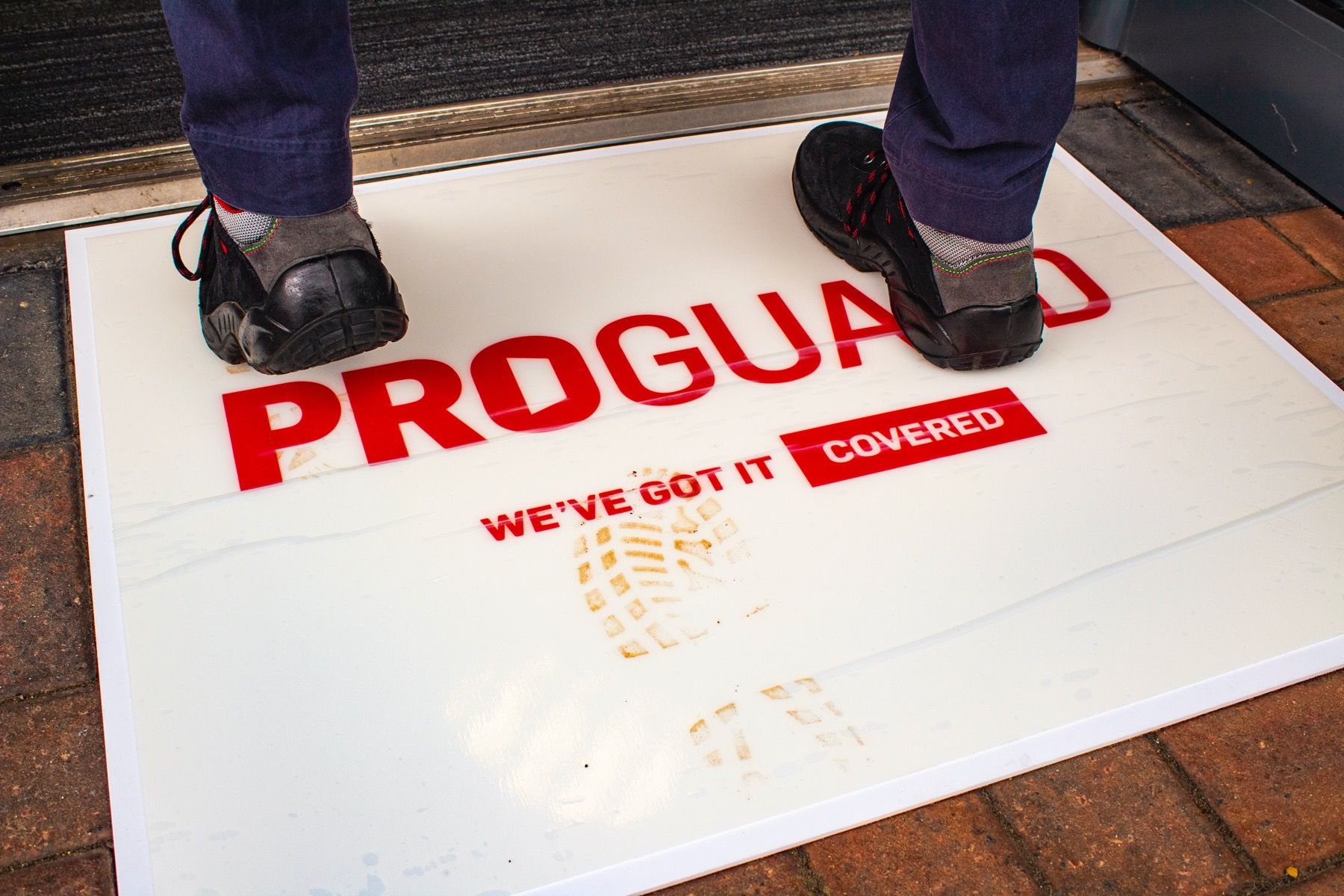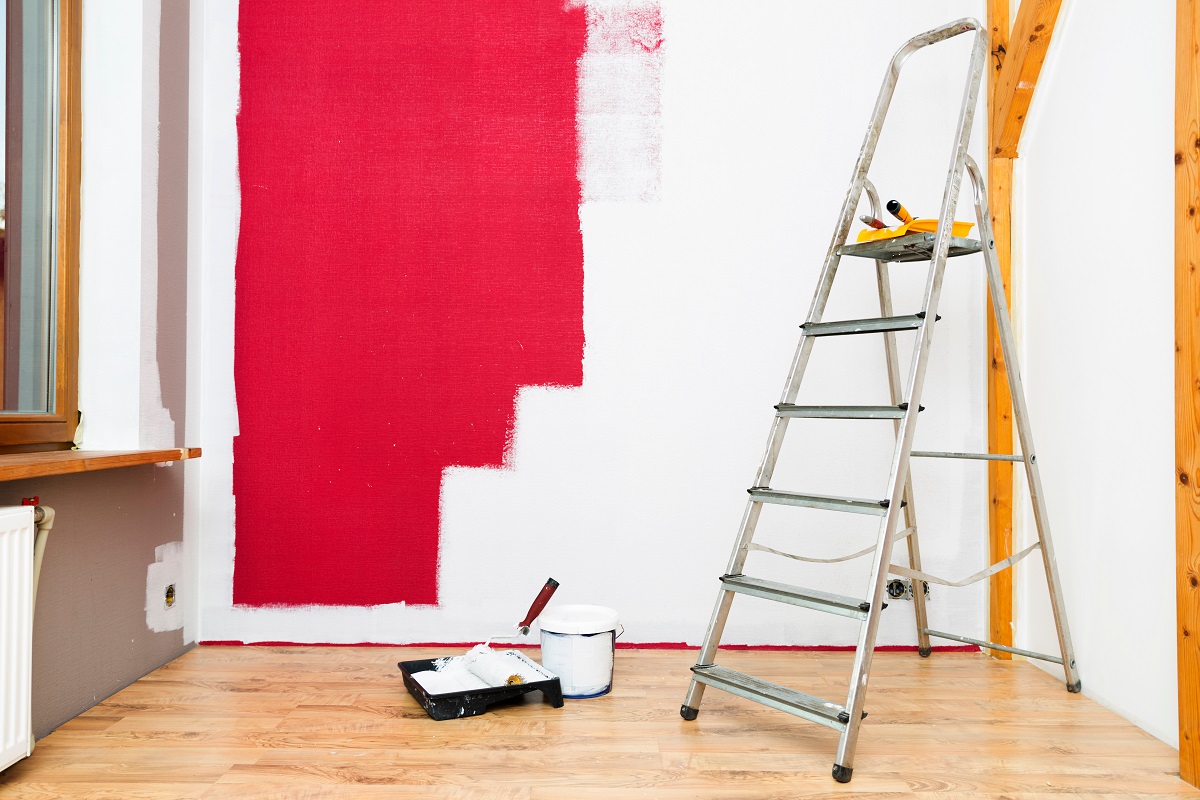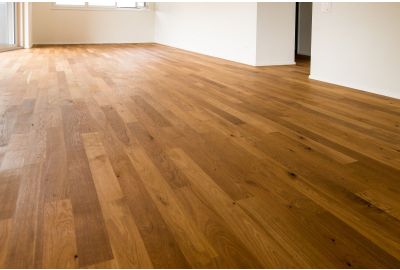Floors are one of the most important surfaces to protect during construction, building, or renovation projects. This is particularly crucial when wooden floors are involved, as these can easily be scratched, chipped, and dented. Ensuring the protection of wooden floors should be a key concern of workers, and in this guide, we provide some tips and advice to ensure these delicate surfaces are looked after.
Use temporary floor protection
The best way to protect wooden floors during a building job is to utilise temporary floor protection. Covering the entire floor with a suitable cover is an efficient and affordable way to keep the floors in good condition. Temporary floor coverings are easy to install and remove once the job is done and come in a variety of options depending on your surface requirements.
The best floor protection options for wood floors include:
- Corrugated card - This is a sturdy and affordable option that can be cut to size and used to protect large floor areas. Card floor protection like this can prevent denting wooden floors during heavy-duty construction projects.
- Self-adhesive protection film – A floor protection film that is 100% waterproof will help protect wooden floors from spills and prevent scratches. Self-adhesive options are easy to install and don’t require any tapering.
- Breathable floor protection – When protecting new wooden floors that need to cure, make sure to use a breathable protection sheet such as fleece which provides cushioned protection for sensitive surfaces.
- Polythene sheeting – To protect against paint spills and dust that are created during construction, protect wooden floors with polythene sheeting and for extra protection, consider a heavy-duty polythene sheet.
READ ALSO: How to protect floors when painting?
Secure the coverings correctly
To provide the correct protection to wooden floors, it’s important that you secure any coverings that you have laid down. Failing to do so can lead to your floor protection shifting during work activities and increase the likelihood of damage being inflicted on the floor below.
If you use adhesive floor protection, securing it in place will be quick and easy. If you use non-adhesive floor protection, however, utilise some low-tack tape to stop your sheets from sliding against the wood surface. A good quality, low-tack tape won’t leave any residue once removed and will help you avoid any damage to the floor.
Establish foot traffic routes

On a building site or construction job, there will inevitably be a lot of foot traffic from the various workers coming in and out of rooms. To stop people from bringing in debris from the outside and causing scrapes along those wooden surfaces, it’s crucial that you establish walking routes.
You can stop workers tracking in mud from outside by placing dirt trap mats at the entrances and protect the walkways themselves by laying down protective film and sheeting. Ensure you clearly communicate and enforce these pathways to ensure workers are aware of the designated routes.
READ ALSO: Which floor protection should you use for high-traffic areas?
Modify tools and equipment
Modifying tools and equipment can also provide protection for wooden floors. Try to attach soft rubber or plastic pads to the bottom of heavy equipment and tools that come into direct contact with the floor. This can help to minimise the impact of items like ladders and prevent sharp edges from causing damage. Little steps like this can make the difference and ensure wooden floors stay in the same condition that you found them.
Wear appropriate footwear
Another way to protect wooden floors is to instruct workers to wear appropriate footwear with non-marking soles. Rubber-soled shoes are often the best choice; make sure they also provide the necessary protection for workers’ feet. You can also consider specialised protective shoe covers designed to prevent damage to delicate surfaces like wood floors.
READ ALSO: What you need to know about PPE requirements on a construction site
Move heavy items correctly
Moving heavy items correctly will be essential to keeping wooden floors safe. Make sure that workers use proper lifting techniques and equipment like dollies and sack trucks to avoid dragging objects and scuffing up the floor. There’s no point in following other best practices if you are going to drag things along the floor.
Keep the site clean and ventilated

Even if you utilise temporary floor protection, a building site will still generate small amounts of dust and debris. Protection materials will help make this more manageable, but you should still look to clean up at the end of each day.
Remove debris and clean the floors to prevent the spread of dust, and if you are working with paints, make sure that any spills are cleaned up right away to avoid leaving permanent marks on the floor.
Chemicals, dust, and debris can settle onto the floors and damage them, so keep the room ventilated with fans and open windows to help prevent dust from circulating throughout the space.
Provide training to staff
It’s important to communicate to staff the importance of protecting surfaces and the best practices that are in place. Take the time to educate all workers with training and clear instructions while emphasising the need for carefulness and vigilance to prevent accidental damage. Protection measures will only be effective if they are adhered to and put into practice by everyone on the site.
READ ALSO: How to lay a new floor without causing any damage
How to protect wooden floors during construction
- Use temporary floor protection
- Secure the coverings correctly
- Establish foot traffic routes
- Modify tools and equipment
- Wear appropriate footwear
- Move heavy items correctly
- Keep the site clean and ventilated
- Provide training to staff
Following the steps above, such as laying down and securing temporary floor coverings, ensure that wooden floors are looked after during any project.
Here at Proguard, we are the experts when it comes to temporary protection materials. If you want to ensure wooden floors receive the protection they need, browse our range of surface protection products.
For more tips, guides, and advice, visit our news page.

